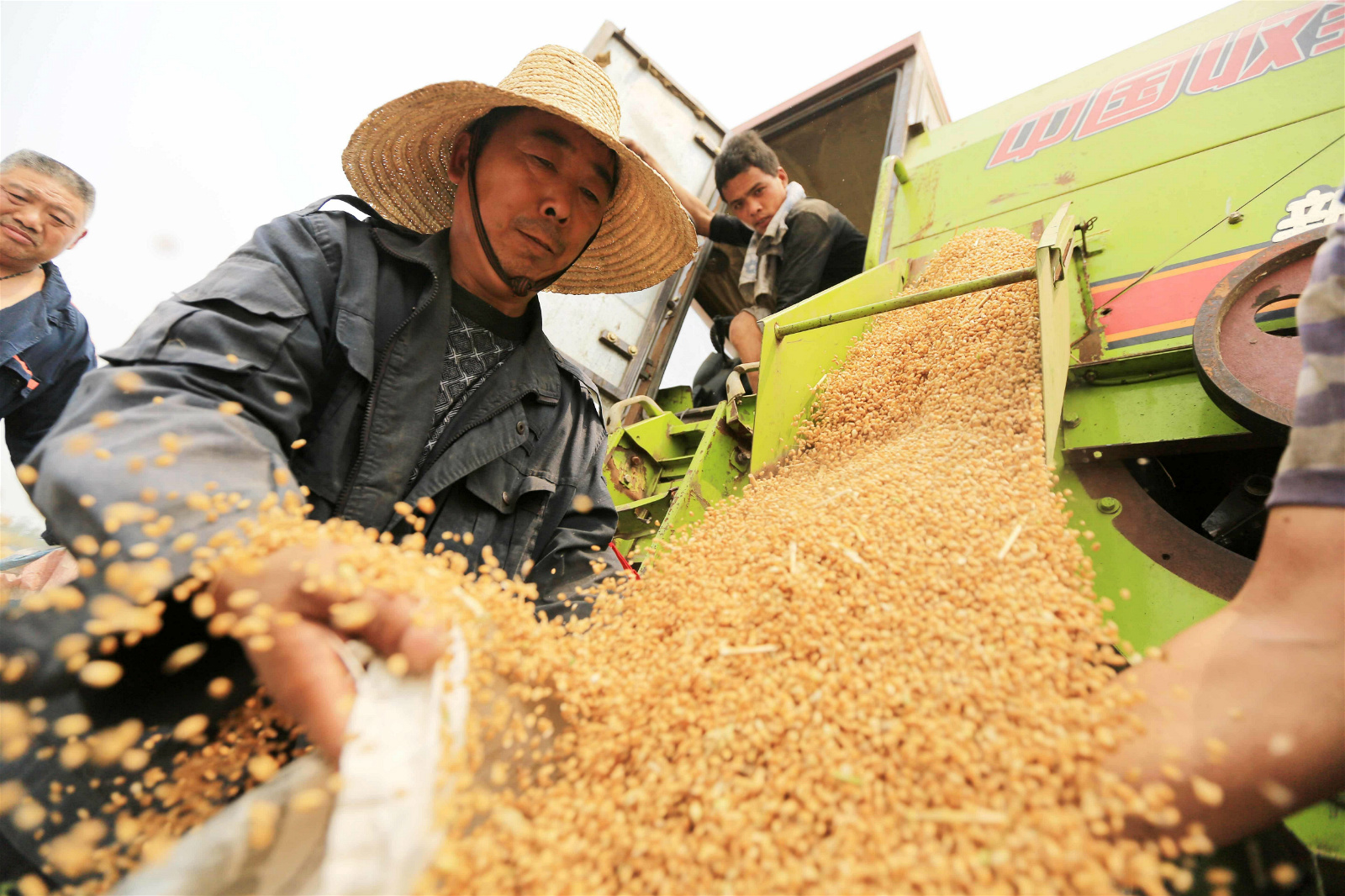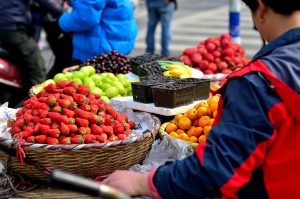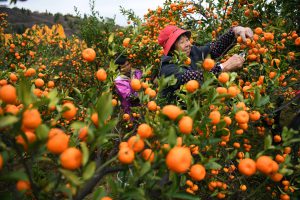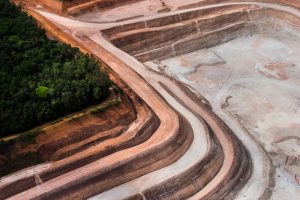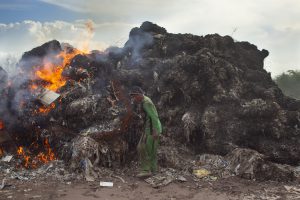Since 1949, China’s grain harvests have increased fivefold, with per capita harvest doubling, and supply roughly matching demand. Yet food remains a top concern for China’s policymakers, as detailed in an October white paper by the State Council Information Office.
Rather than focussing on simply having enough for its citizens, China’s major goals are now to grow better quality crops for human consumption and enough animal fodder to satisfy a growing meat and dairy demand.
To these ends, researchers are developing more productive and resilient crops. Meanwhile, the Ministry of Agriculture aims to ensure 80 million mu (53,000 km2) of high-quality arable land is made available this year alone. Making land “high quality” includes improving irrigation systems, access for machinery like combine harvesters, and soil quality.
Bigger harvests, or better?
In 1994, American environmental analyst Lester Brown published Who Will Feed China? The book sparked concern that China’s food insecurity would trigger a global food crisis. With 7% of the world’s arable land, Brown asked, how could China feed its 20% share of the population?
In a 1996 report on food security, the government tried to address this concern. It boosted research into food issues and provided more policy support for farmers. By 2019, advances in agricultural technology had led to far higher yields.
There have now been two decades of good harvests, with yields of over 650 billion kilograms for the last four years, according to Zhang Zhaoxin, a researcher at the Ministry of Agriculture. Yet China’s food security is still internationally important. “Our responsibilities to the world mean we cannot allow a large food gap,” Zhang warned.
He added that China’s food priority has moved from producing enough grain to improving its quality. Focussing only on increasing output has given food firms a headache, he said. China produces a surplus of wheat, for example, yet continues to import the grain from Canada and the US.
“Because in China various types of wheat are mixed together, it’s hard to get a consistent quality. If a company wants to make a particular high-quality flour, they have to import the right type of wheat,” Zhang explained.
Luo Shiming, former dean of South China Agricultural University, told China Dialogue that the government has been paying increasing attention to seeds, boosting investment in research and breeding. China’s Seed Law, which came into effect in December 2000, was revised in 2015, with protections for new strains and controls on imitations.
Greater harvests hiding worries
According to the white paper, China will see food supply and demand remain “tightly balanced” in the mid- and long-term. Though China’s population is stabilising, increased demand for meat, eggs and milk will necessitate the production of more animal fodder. The white paper expects this trend to continue for some time, with annual increases in grain output not resulting in a surplus.
Zhang Zhaoxin points to a fundamental scarcity: “First, we need to make sure we have land, and good land.”
Food output in China fluctuated in the years after 1996, and even started to shrink in 1999, not growing again until 2004. Harvests did not return to 1998 levels until 2008. This was partly due to flooding and the El Niño effect, but mainly down to arable land loss. Urbanisation and industrialisation bit into China’s arable land for 11 consecutive years from 1997, forcing the government to set a 1.8 billion mu (1.2 million km2) “red line” in 2006. Strong protection policies have meant, according to a recent report, slight increases in arable land area, and the red line is, for now, safe from being breached.
But what about quality? Intensive farming, chemical pesticides and monocropping have caused rapid falls in the productivity and resilience of the land, making it more vulnerable to natural disasters. So government departments, including the Ministry of Agriculture and the Ministry of Land and Resources, have implemented a series of initiatives to ensure the availability of good farmland. In 2013, the government set a target of creating 800 million mu (53 million km2) of high-quality arable land by the end of 2020.
The white paper stresses maintaining the arable land red line and improving quality. The prominence given to protecting the environment highlights the importance of pollution to food security issues, according to Luo Shiming.
Influencing the international market
The impacts on international markets of how China feeds itself are profound.
China started importing grain after joining the World Trade Organisation in 2001, abolishing import quotas and licenses. “Soft quotas” for wheat, corn and rice still exist but imports in excess of quotas are permitted on payment of a tariff. Meanwhile, tariffs for other grains have been cut significantly.
China’s main concern on participating in international food markets was to make use of relative advantages in grain production to boost rural incomes while also ensuring food security. Imports to make up for weaknesses in China’s output, and exports of some high-quality grain, meant better returns for Chinese farmers. This saw China move from being a net exporter to a net importer of soybeans, and the country is still the world’s largest soy importer. But in 2002, China become a net exporter of wheat, which it sends to Southeast Asia.
The white paper repeatedly stresses that China “conscientiously fulfils its commitments to the WTO”, opening grain markets and actively cooperating internationally. Luo Shiming said it seems China will continue to focus primarily on being self-sufficient, while drawing some assistance from international trade.
However, China’s relationship with international food markets is not always easy. Trade frictions with the US and natural disasters have meant problems for soy imports in the last year or two, prompting China to look to increase domestic production and find alternative suppliers. But Zhang Zhaoxin thinks that while policies such as those stimulating soy production aren’t in conflict with cooperation via international markets, the future will see more emphasis on stability of imports and capacity to respond to policy changes and natural disasters.
Zhang Zhaoxin and Luo Shiming both think that China should make good use of international markets, but also increase competitiveness of its own agriculture, whether by promoting exports or reducing reliance on imports.
China’s own grain crops suffer from variable quality and are facing rising labour and transportation costs, land loss and pollution from agrichemicals. This gives good quality and cheap imported grains a market advantage. The big question for Chinese agriculture is how to improve quality while reducing costs?
The two challenges may to an extent have a shared solution. Zhang Zhaoxin has repeatedly emphasised the importance of developing better crop strains by selective breeding and genetic modification. Luo Shiming, meanwhile, says increasing crop resilience will help reduce reliance on chemicals.
International markets have noticed new Chinese tastes and concerns about eating better. Brazil, for one, wants to go beyond just exporting soybeans to trading superior food products with China, Nepstad said.
“Low margin commodities like soy are unsustainable and China’s economy is also transitioning to higher quality development [that] will begin to demand higher quality imports.”
